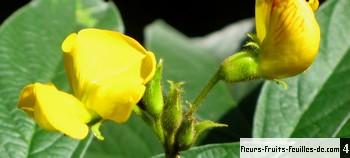About Lesson
Introduction
- Scientific name: Cajanas cajan
- Origin: Africa
- Contain 20-25 % protein, 6% CHO, 1.5% fat and rich in minerals, vitamins and amino acids.
- Can fix 168-280 kg Nitrogen/ ha/year.
- also known as “Red gram” accounting to its seed coat color.
Importance
- Primarily consumed as dal.
- The tender green seeds are consumed as vegetables.
- The crushed dry seed are used as animal feed, the green leaves as fodder, the stem are used as fire wood and making huts, baskets etc.
- The leaves of pigeon pea are also used to feed silkworm and the plants are used to culture lac insect as well.
- Reduces soil erosion, permits multiple harvesting and browsing.
- Tall plants serving as wind breaks and live fences and also as green manure at a tender age.
- The estimated symbiotic N fixation is about 168-280 kg N/ha/year.
Origin and Distribution
- Primary center of origin is India and the secondary center of origin is Africa.
- In Nepal, it is grown in Banke, Bardia, Kailali, Rupandehi, Kapilbastu, Sarlahi, Dhanusha and Mahottari districts.
Classification
- 2 types:
A) Cajanas cajan var bicolor:
- Generally called Arhar.
- Late maturing type (240-270 days) tall (up to 4m) heavily branched perennial shrub.
- Possess yellow flowers with purple or red streaks.
- Flower during December to February.
- Have dark colored pods containing 4-5 big seeds (1000 seed weight= 100 -120g).

B) Cajanas cajan var flavous:
- Generally known as Tur.
- Are early maturing (155-165 days) smaller annual shrubs.
- Flower during September-November producing yellow flowers.
- They have green pods containing 2-3 smaller seeds (1000-seed weight= 65-90g).

